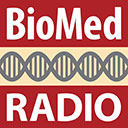Cutting NIH budget could cripple drug development
More than 95 percent of new drugs developed with NIH support
 Washington University
Washington UniversityWashington University researchers have found that more than 90 percent of the newest and most widely prescribed drugs on the market needed National Institute of Health (NIH) funding early in their development. The researchers believe proposed cuts to the NIH budget could cripple future development of new, life-saving drugs.

A proposal to slash funding for the National Institutes of Health (NIH) could severely impair the development of new, life-saving drugs, according to a new analysis by researchers at Washington University School of Medicine in St. Louis.
NIH funding supports the early research needed to develop new, innovative drugs. President Donald Trump’s proposed budget calls for cutting the NIH budget by 21 percent, or about $7.2 billion.
By analyzing how past NIH funding affected new drug development, the researchers predicted the proposed budget cuts would undermine drug development, a scenario that portends big trouble for the public, according to senior author Michael S. Kinch, PhD, an associate vice chancellor at Washington University and director of its Center for Research Innovation in Biotechnology and Center for Drug Discovery.
“Cutting the NIH budget could dismantle our ability to address real problems,” he said. “Take antibiotics, for example. We’ve grown accustomed to being able to treat infections, but now bacteria are becoming resistant to existing drugs. If funding cuts slow the development of new infection-fighting medicines, then in future years, many people may die from infections that once were treatable.”
Kinch and his colleagues analyzed budget data from NIH and the Food and Drug Administration (FDA) to learn how much NIH support contributed to the early development of commonly prescribed drugs. They also zeroed in on newer drugs that were approved by the FDA in the past decade.
Their findings, published Nov. 16 as a letter in the journal Cell Chemical Biology, show that more than 90 percent of the new and/or commonly prescribed drugs received funding from NIH to support their early development.
An analysis of the 100 most commonly prescribed drugs in the U.S. — such as Synthroid, which replaces the hormone normally secreted by the thyroid gland; Crestor, a statin used to lower cholesterol; and albuterol, an inhaled treatment for people with lung diseases such as asthma — revealed that 93 percent had received NIH funding. For drugs approved by the FDA from 2010 to 2016, the percentage that relied on NIH support was even higher: 97 percent.
“NIH funding is instrumental in the early research needed to develop FDA-approved medicines,” said Kinch, also a professor of biochemistry and molecular biophysics. “Our data suggest that the development of newer drugs is becoming even more dependent on NIH funding.”
In addition, because it can take 10 years or more for a drug to move through the pipeline and receive FDA approval, cuts in NIH funding now could continue to impair the development of new and better drugs for decades.
“The average cost of developing a new medicine is $1 billion to $3 billion,” he said. “And at the earliest stages of research, there is more uncertainty and the risks are bigger, so pharmaceutical companies have focused their efforts on spending during later stages of development, as drugs move through clinical trials.”

Kinch said that for decades, pharmaceutical companies have been moving further away from the earliest stages of research. For years, he explained, that withdrawal of private-sector funding was less noticeable because new biotech companies were appearing on the scene, and those firms helped pay for the early research that pharma companies no longer funded. But in recent years, many biotech firms have disappeared, and the creation of new biotech companies has fallen by about 50 percent.
That leaves NIH as the primary funder of early-stage research and development now and, presumably, in the future. Kinch said further NIH budget cuts could slow drug development and leave the public without access to new therapies for years to come.







